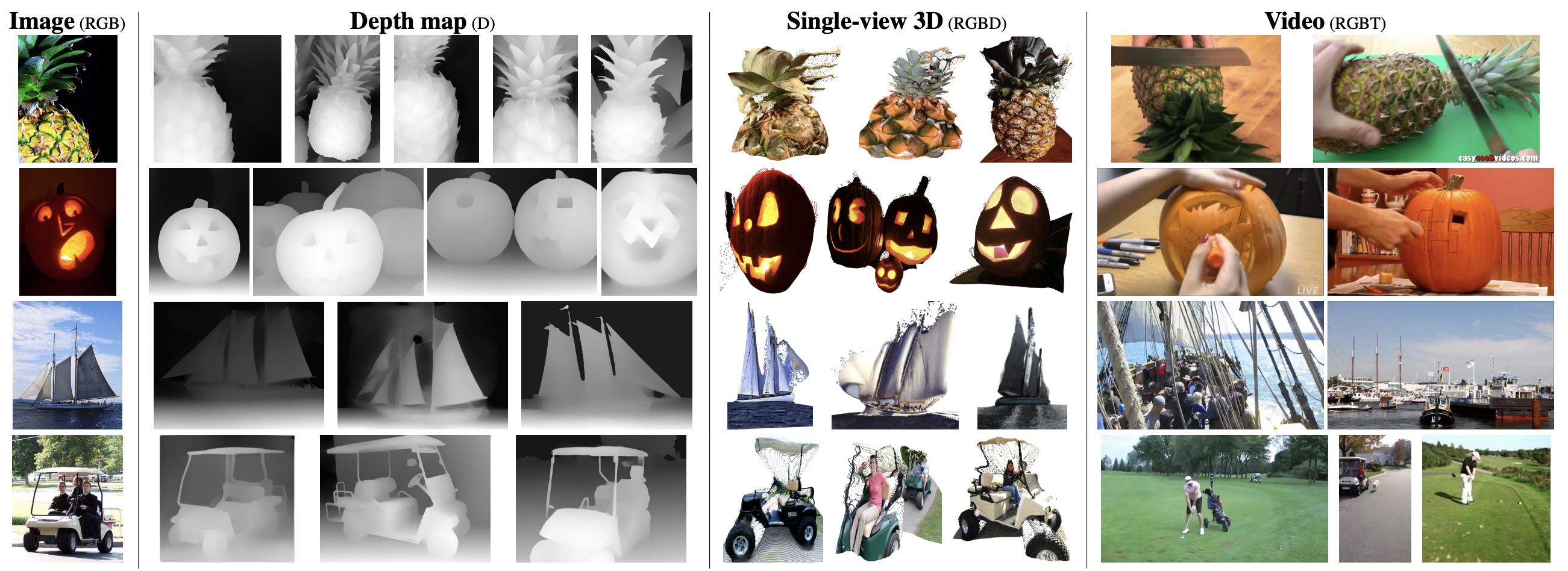- Introduction

현재, computer vision model 들은 single modal 에 대하여 굉장히 잘 작동함
그러나 사람과 같이 modal 에 대한 flexibility 를 가지지 못함
► Modality-agnostic model 의 필요성
Modality-agnostic model 의 장점
- Cross-modal generalization: 한 가지 modality 에서 배운 정보를 다른 modality 의 recognition 에 활용할 수 있음
- Saves the research and engineering effort: 너무 당연함
- Leverage new visual sensors
이런 장점들에도 불구하고 다양한 문제(capacity)들로 인해 연구가 거의 되지 않았음
논문에서 제안하는 OMNIVORE model 은 (1) Image, (2) Video, (3) single-view 3D 를 다룸
- Method

Input Patches
Input 을 모두 $\mathbf{X} \in \mathbb{R}^{T \times H \times W \times C}$ 의 4D tensor 로 표현
Image: $\mathbf{I} \in \mathbb{R}^{1 \times H \times W \times 3}$
Video: $\mathbf{V} \in \mathbb{R}^{T \times H \times W \times 3}$
3D Image: $\mathbf{D} \in \mathbb{R}^{1 \times H \times W \times 4}$
Model Architecture
$t \times h \times w \times c$ sized patch into $d$ size embedding
All ViT architectures are available - Swin transformer is used in this paper
Two positional encoding - Spatial dimension, temporal dimension
$f(\mathbf{X})=\boldsymbol{\Phi}$
Dataset-specific linear classification layers on top of $\boldsymbol{\Phi}$
- Experiment
TBU
- Discussion
별 다른 내용 없다고 느껴짐..
- Reference
[1] Girdhar, Rohit, et al. "Omnivore: A single model for many visual modalities." CVPR 2022 [Paper link]